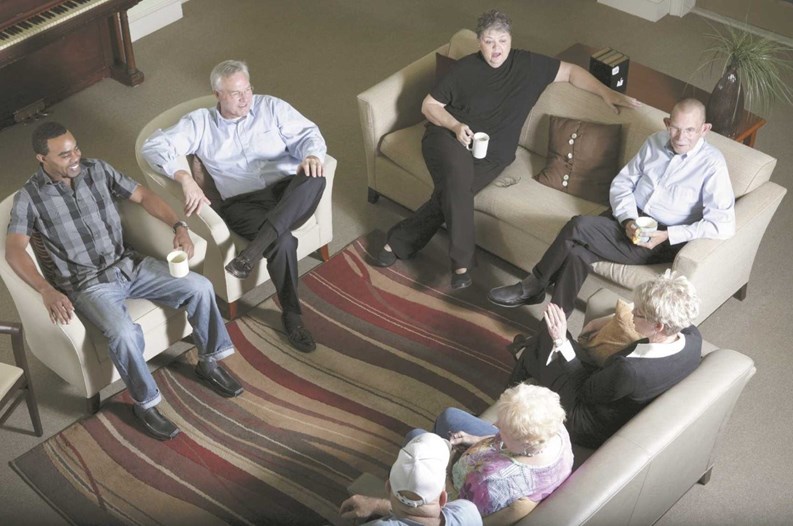It's a problem as old as community associations themselves: How do managers increase interest in the possibility of board service? “You know, it’s very common,” says Lynne Kelly, president of Kelly Property Management in Burlington, Massachusetts. “People who move into condominiums just want to go to their annual meeting, if that, and pay their condo fees and live their own life.”
It’s understandable then, with self-interest as a watchword for the average condo dweller, that so few would ever take the time to serve. But what role can management play in increasing community involvement? And why don’t more unit owners make the effort to get involved?
“They assume it’s going to take a lot of time and they also don’t want to deal with the aggravation factor of trying to act in the best interest of the association,” says Tim Arel of North Point Management in Amherst, New Hampshire. “They feel that every decision they make would be challenged by someone, or some group, within the association. So, I think it’s a lack of being able to feel a sense of satisfaction or accomplishment in what they’re doing.”
Apathy toward day-to-day condo governance is hardly a new problem. Yet, in today’s tense economic climate, one might at least expect budget meetings to generate increased interest. Not so, say experienced managers. “I think it’s still pretty much status quo,” notes Kelly. A working property manager herself, Kelly says she’s seen no great increase in interest by unit owners. “I haven’t seen much of a change as far as dealing with the associations. As long as your board is up-to-date with everything that’s going on—and our boards are—I have not seen any urgency in regards to [unit owners wishing to attend] budget meetings and so forth.”
“It depends on the specific association,” says Arel. “If we’re dealing with an association that has had either assessments or large increases in their budget in the last couple of years, then there is a substantial interest from the owners in trying to know what is going on in the budget process. But for those associations who have had very stable budgets, there is usually little interest. The assumption tends to be things will stay the same.”
Under such conditions, today’s best managers face an ongoing challenge when attempting to engage unit owners. And that’s often where online options come in to play.
“With this environment where people are tech-savvy and use social media and social networking to get their information and communicate, you don’t have a lot of people who have the ability to come to the meetings—the source where you used to get your information. But with social media,” Arel says, “you’ll have more people involved and know what’s going on which is, I think, a great benefit to the association.”
Be Wary of Social Media
Yet, unlike other businesses, many condo managers have found new social media platforms—Facebook, Twitter, etc.—to be less effective than more traditional online tools. “I do a lot of close contact with the board via email,” says Kelly. “We are getting more of our associations involved in sending out messages via email to give unit owners updates as to what’s going on. We don’t use Facebook but we use a lot of direct e-mail contact through unit owner’s e-mails.”
Like Kelly, Kim Chapman, property manager for the Nashua, New Hampshire-based Stabile Companies, sees traditional e-mail as the most effective tool for raising awareness and involvement. “We do have a page and whatnot for Facebook,” she says, “but it’s more of a marketing tool.” Kelly and Chapman are hardly alone in their avoidance of social media, as many managers have found that open forums like Facebook—where “friends” are allowed to post freely on an association’s page—easily turn into little more than gripe sessions. Such forums for public complaint, not easily moderated by property managers, hardly serve to put the community’s best foot forward.
Instead of social media, many managers like Chapman prefer to increase community involvement through condo websites—often more configurable than traditional social networking pages—and the use of broadcast e-mail programs. “The software allows us now to communicate faster, and really, it’s saving time and money using these kinds of broadcast software. That’s one of the things that are really nice about it.”
Beyond the Nuts and Bolts
“We try and send out the agenda to the owners by mass e-mail,” explains Arel, “and we list topics that are scheduled to be discussed at the upcoming meetings. And that’s how you tend to generate interest when there is a topic of discussion that’s going to be at the board meeting and that interests a group of owners.” But, in addition to “nuts-and-bolts” condo topics, those emails, say experienced managers, should include invitations to regular community gatherings—informing unit owners of the tedium of budget meetings along with the novel fun of holiday parties, community barbecues, cooking classes, book clubs, and other interest-generating events. If association e-mails include “a spoonful of sugar,” they’re much more likely to be anticipated and read.
“A way to get participation from unit owners is to do a lot of networking in the association—having coffee with the trustees, have an association do a yard sale in the fall, having socials in the summer months,” says Kelly. “Try get people involved with one another.” And that tacit involvement—simple engagement with the condo community—can often be used as a springboard to generate interest in specific community aspects. From there, unit owners are often easily encouraged to serve on related condo committees—often the first step for a potential future board member.
“I always encourage the boards to have standing committees to assist the association,” Arel says. “I think the more owners you have providing input into the decision-making process, the better the decision, as an end result, is going to be. And when you’re making some of the tough decisions that have to be made with regard to cost items, having more people involved gives a better justification. You end up having fewer questions from the owners because you’ve allowed them to participate in the process.”
While there are always “dog” committees—“some boards want to have repair and maintenance committees, and most unit owners don’t want to get involved in that,” remarks Kelly—boards can often populate standing committees fairly easily. Such committees then give unit owners a chance to formulate their own individual specialties, giving members a sense of purpose and often creating go-to “experts” on association topics. And, in the case of controversial decisions, such committee members may well have strategic value—providing additional voices to help explain the board’s reasoning on a hot-button topic.
“Committees,” notes Arel, “serve a dual purpose in a strategically-run condo association. One is for the specific purpose of assisting the board, but number two is getting people involved in the process so that they, in the future, may step-up to be on the board—and have the background information and understanding to better serve in that capacity as a board member.”
From these building blocks, say experienced managers, many long term condo board members have been created—all by showing residents that board service offers a strong sense of purpose and genuine personal rewards. “I think what you do is get them to volunteer or participate in the process whether it be by serving on a committee or just providing their input through social networking or through surveys,” Arel says. “Getting them involved, so they see how the process works, is the best way of getting them trained and interested in running for the board.”
In the end, as Kelly aptly observes, a major goal of condo living is a hands-off, maintenance-free existence. “You know a lot of people move into condominiums because they don’t want to do a thing, and they don’t want to be involved in anything,” she quips. “But, when it comes down to it, we’ve always had someone who’s been willing to step up and serve.”
Matthew Worley is a freelance writer and a frequent contributor to New England Condominium.







Comments
Leave a Comment